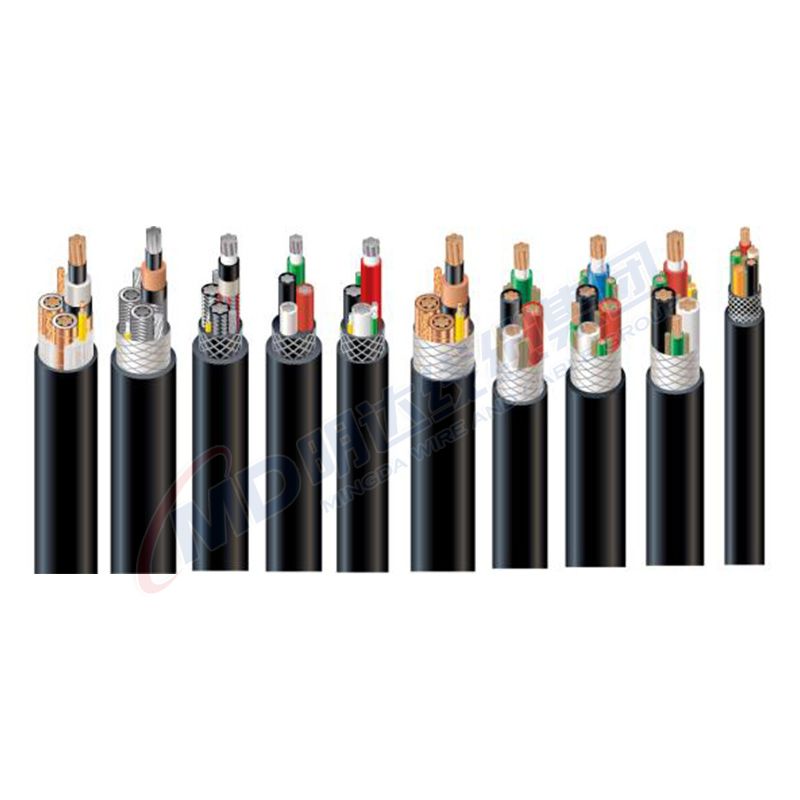កុម្ភៈ . 19, 2025 10:56 Back to list
MC ( Type XHHW-2 )
Exploring the diverse world of electric cable wire types is essential for anyone involved in electrical projects, whether for residential, commercial, or industrial purposes. Selecting the right type of wire not only ensures the effectiveness of the electrical system but also enhances safety and efficiency. Here, we delve into the various types of electric cable wires, designed to satisfy both general and specific needs, providing a comprehensive understanding rooted in experience and expertise.
Power Cables, robust by nature, are designed to transmit high-voltage electricity. They comprise multiple layers of insulation and protection to safely carry electricity over vast distances. Common in both underground and overhead power transmission systems, selecting the right power cable is critical for ensuring the electrical grid's stability and reliability. In the context of specialized applications, consider Fiber Optic Cables. These are at the forefront of telecommunication technology, utilizing light to transmit data over long distances with minimal loss. Comprising glass or plastic fibers, their high bandwidth capabilities make them indispensable in modern high-speed data networks. Furthermore, Armored Cables provide an additional layer of protection with their steel or aluminum sheathing. Particularly used in environments requiring enhanced mechanical protection against physical damage, they are common in industrial settings and underground installations. Lastly, consider Flexible Cables, often employed in mobile equipment and situations necessitating frequent flexing or movement. Their design incorporates highly stranded conductors with superior insulation flexibility, making them ideal for applications demanding both durability and flexibility. When choosing the correct cable type, factors such as current-carrying capacity, environmental conditions, and compliance with electrical safety standards are paramount. Consulting with industry experts and adhering to national and international standards ensures not only the longevity of the cable but also the safety of the electrical installations. Understanding these intricate details about electric cable wires empowers consumers and professionals to make informed decisions. This enhances trust in the electrical system's efficiency, safety, and reliability and signifies the importance of choosing quality components. With technological advancements and an ever-increasing reliance on electrical systems, staying informed about the best practices and innovations in electric cable wire types remains an invaluable pursuit for professionals in the field.


Power Cables, robust by nature, are designed to transmit high-voltage electricity. They comprise multiple layers of insulation and protection to safely carry electricity over vast distances. Common in both underground and overhead power transmission systems, selecting the right power cable is critical for ensuring the electrical grid's stability and reliability. In the context of specialized applications, consider Fiber Optic Cables. These are at the forefront of telecommunication technology, utilizing light to transmit data over long distances with minimal loss. Comprising glass or plastic fibers, their high bandwidth capabilities make them indispensable in modern high-speed data networks. Furthermore, Armored Cables provide an additional layer of protection with their steel or aluminum sheathing. Particularly used in environments requiring enhanced mechanical protection against physical damage, they are common in industrial settings and underground installations. Lastly, consider Flexible Cables, often employed in mobile equipment and situations necessitating frequent flexing or movement. Their design incorporates highly stranded conductors with superior insulation flexibility, making them ideal for applications demanding both durability and flexibility. When choosing the correct cable type, factors such as current-carrying capacity, environmental conditions, and compliance with electrical safety standards are paramount. Consulting with industry experts and adhering to national and international standards ensures not only the longevity of the cable but also the safety of the electrical installations. Understanding these intricate details about electric cable wires empowers consumers and professionals to make informed decisions. This enhances trust in the electrical system's efficiency, safety, and reliability and signifies the importance of choosing quality components. With technological advancements and an ever-increasing reliance on electrical systems, staying informed about the best practices and innovations in electric cable wire types remains an invaluable pursuit for professionals in the field.
Share